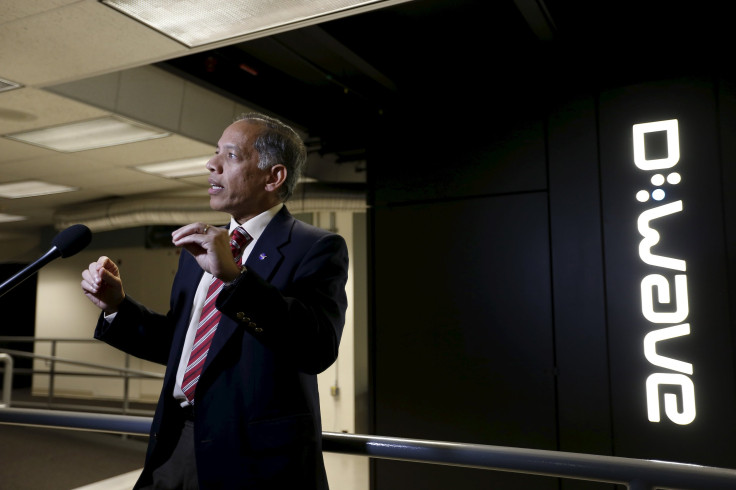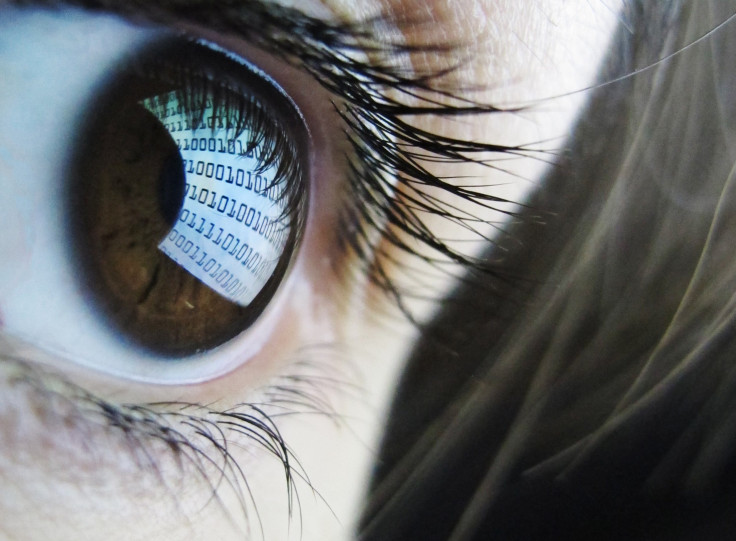Google's Quantum Computing Milestone Signals A Revolution Is Coming -- Just Not Anytime Soon

It was flagged as a "watershed" announcement in the development of quantum computing and it didn't disappoint. Google announced this week that in collaboration with NASA, it had proved its quantum computer, built by controversial Canadian company D-Wave, had solved a specific problem 100 million times faster than a conventional computer could. To put it another way, Google's quantum computer did in one second what it would take a conventional system 10,000 years to complete.
With everyone from IBM, Intel, Microsoft, Google, NASA and the CIA investigating the potential of quantum computing, it is set to revolutionize the way complex problems are solved, but, despite Google's significant milestone, the time when quantum computing will make a real difference to our lives is still a decade away.
Google's D-Wave 2X quantum computer sits inside NASA's Advanced Supercomputing facility in Silicon Valley, and Hartmut Neven, director of engineering at Google, announced the breakthrough Tuesday. He called the results of its research "intriguing and very encouraging," adding a lot more research had to be done before it can be turned into a "practical technology."
Steady Progress
The idea of a quantum computer has been around for some time with the original concept rooted as far back as the 1960s. While progress toward the practical implementation of this technology has been moving along at a steady pace, it is still not at a point where quantum computers are a reality.
The science behind quantum computers is complex. In short, such a system sees the traditional bits used in digital communications replaced with quantum bits, or qubits. Qubits exist in a state of superposition, meaning they can be in both on/off states at once, rather than restricted to either binary state as traditional bits function — which means calculations can be performed much faster.
To date D-Wave, based in Burnaby, British Columbia, and the best known manufacturer of quantum computers, has been dogged by controversy. For the last eight years scientists and researchers have consistently said the company's chips did not show any quantum speedup.

100 Million
The results shown Tuesday, which are yet to be peer reviewed, will be a major boost for D-Wave. The company announced a significant breakthrough in August with the 2X machine, featuring the world's most powerful quantum computer processor with 1,097 qubits, more than double the size of the previous largest processor. In addition to Google, D-Wave has sold quantum computers to Los Alamos National Laboratory and Lockheed Martin, which is being used by the University of Southern California.
The headline grabbing figure of 100 million times speed-up will likely catch a lot of people's attention, but it has to be remembered this milestone was solving a very specific problem in laboratory conditions, as Richard Murray, a specialist in the field of quantum technology at Innovate U.K., the U.K. government’s innovation agency, told International Business Times. "The problem that this computer was solving was very specialist. This is not a quantum computer solving a real life problem."
Reality Bytes
And real life applications could still be some time from becoming a reality. Best estimates suggest we will be waiting at lease five more years before we will see a practical implementation of quantum computers, and it could be 10 years before they become really useful. "In a not-too-distant future we will actually see a point where quantum computers are really changing our lives, solving problems which normal computers can't possibly imagine," Murray says.
There is no shortage of interest in developing the technology behind quantum computing. While Google is investing some money in its collaboration with NASA, it announced in September it was setting up an entirely separate operation under the stewardship of John Martinis, a professor at the University of California, who will help engineer Google's own quantum computing chips. Google has not said for what it will use any potential quantum computers, but one area where the power of quantum technology could be used is in cloud computing.
Indeed last year D-Wave's CEO Vern Brownwell said this was his company's intention: "We intend to offer this as a cloud service that people can use without having to purchase a large D-Wave machine and install it in their data center, or have it hosted at our data center."
Quantum computing is very good for very large problems with lots of parameters, which makes it very good at optimization problems. One such problem is known as the traveling salesman algorithm which states:
Given a list of cities and the distances between each pair of cities, what is the shortest possible route that visits each city exactly once and returns to the origin city?
Real World Application
While it sounds like a relatively straightforward problem, it is difficult for conventional computer chips to solve and despite it being used in all navigation devices, it doesn't work as well as it can, but a quantum computer would be able to get to the solution an order of magnitude faster.
This may seem like a trivial problem to be solving using a quantum computer, but if it is applied to the airline and haulage industries, the savings for companies utilizing it could run into millions of dollars a year as well as huge efficiencies in the amount of time taken to deliver passengers and/or goods.
Another application being considered is in the defense area, where the logistics of moving huge numbers of troops, weapons, vehicles and supplies effectively could be crucial to victory. To that end a number of defense contractors in the U.K. are working with researchers in universities as part of the National Quantum Technologies Program a 270 million pound (nearly $410 million) government-backed fund to help bring quantum technology out of the lab and into the real world.
© Copyright IBTimes 2025. All rights reserved.




















